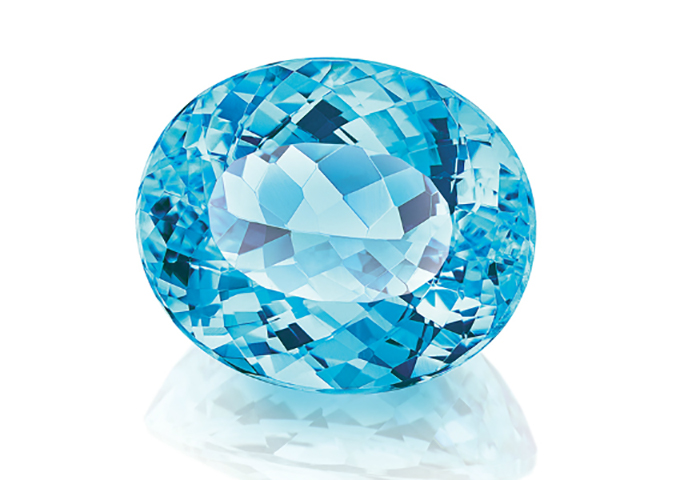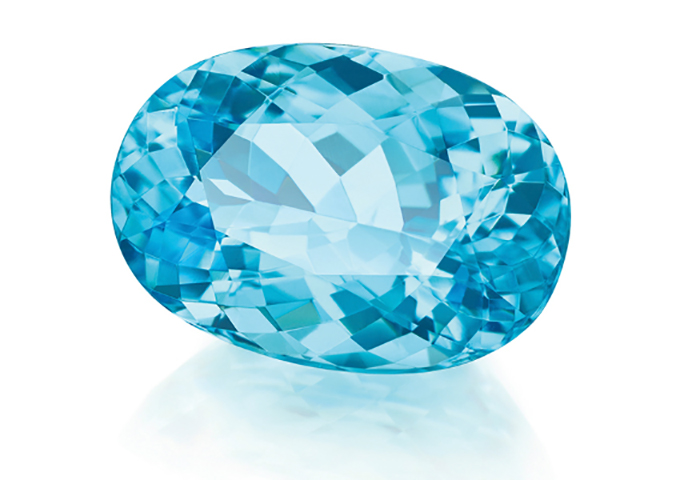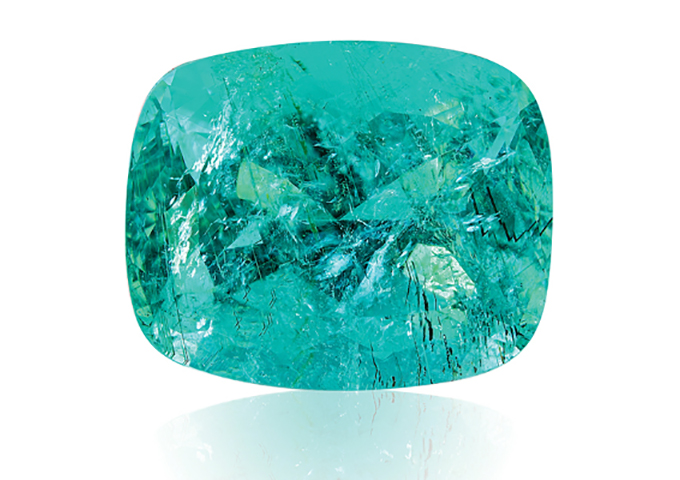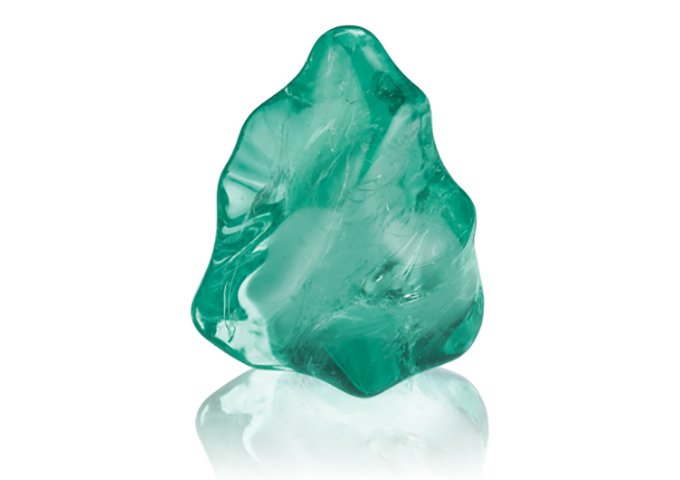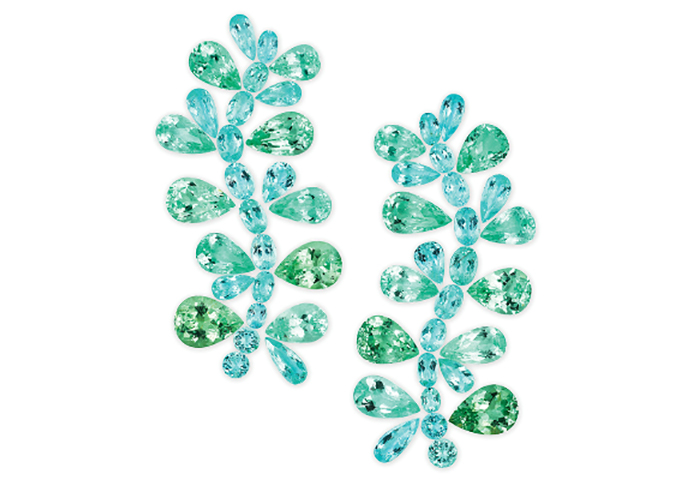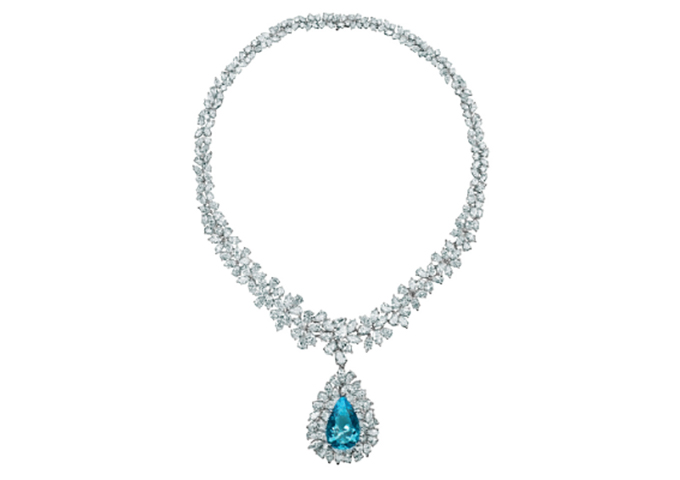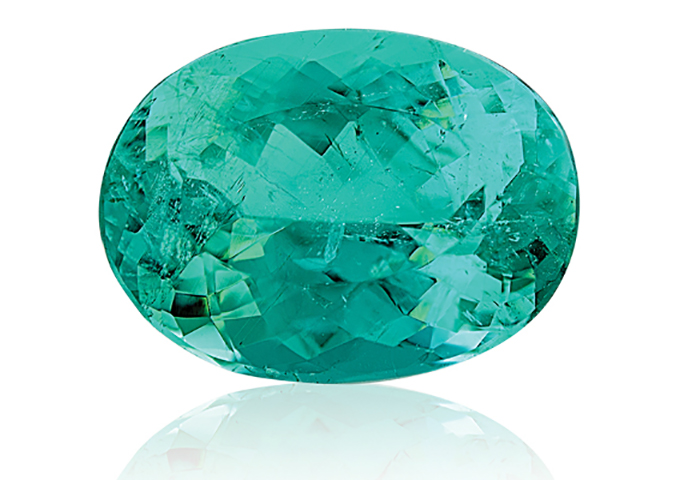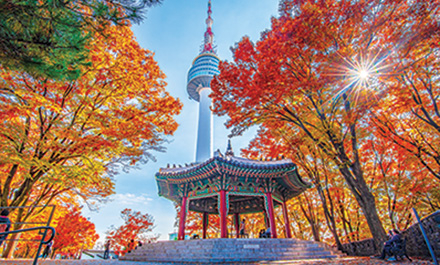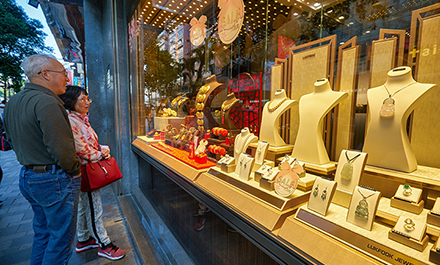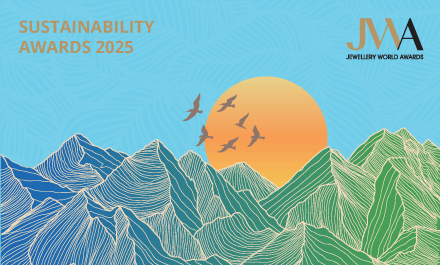Few gemstones could rival the Paraiba tourmaline in colour, clarity and appeal. In the face of the Covid-19 crisis, the gem’s electrifying blues and greens still draw the attention of manufacturers, jewellery designers and collectors. This report focuses on the irrepressible allure of Paraiba tourmalines and how the industry is coping with increasing demand amid tightening supply and soaring prices.
The discovery of the Paraiba tourmaline in the Brazilian state of Paraíba in the late 1980s completely changed the game for the international jewellery and gemstone sector.
For three decades, the gem’s vivid “neon” blue hue – reminiscent of turquoise oceans and lagoons – alongside a clean, captivating surface have redefined the market’s fascination for rare coloured stones. Japan was among the Paraiba tourmaline’s most ardent consumers at the height of its popularity, followed by the US, Europe and the rest of Asia.
The stone’s green, green-blue or violet variants also have a strong following among international buyers.
In fact, there’s nothing like the highly coveted Paraiba tourmaline in the coloured gemstone industry in terms of rarity, colour intensity and overall allure, according to veteran US-based gemstone trader Evan Caplan, who is also a director of the International Colored Gemstone Association (ICA).
Paraiba tourmalines originate from Brazil, Nigeria and Mozambique but those hailing from Brazil are extremely favoured in the market, he added.
Constantin Wild, founder of his titular gemstone trading company based in Germany, remarked that Brazilian Paraiba tourmalines command higher prices since the colour saturation is usually more intense as opposed to their African counterparts.
The original mine in Brazil is however completely exhausted. Smaller stones are still found in nearby gemstone mines but the larger, more valuable variants have become rarer.
As a result, prices of good-quality stones of 1 carat and up have swelled exponentially.
“Paraiba tourmalines from Brazil are almost only available now on the secondary market where they fetch very high prices,” noted Wild. “Mozambique production is also very limited, with prices continuously going up. Owing to the Paraiba tourmaline’s fresh, swimming-pool colour, the gem deserves the hype it gets. Its colour has not been seen since in natural gemstones.”
Solid demand amid uncertainty
Demand for the gem remains strong amid the Covid-19 pandemic but supply is tight, owing to limited production, depleted resources and virus-led disruptions on jewellery and gemstone supply chains, explained Caplan.
It has become exceedingly difficult for gemstone buyers to get a hold of Brazilian Paraiba tourmalines nowadays despite robust demand or, hypothetically, even with the absence of a great equaliser such as Covid-19.
Caplan’s clients from the US, Asia and Europe consistently seek gems from both Brazil and Mozambique but majority of the orders are for Brazilian stones in the 5-carat to 10-carat range.
Pricing depends on several factors such as size, colour, clarity and shape alongside availability of goods. Fine-quality Brazilian Paraiba tourmalines of 1 carat could go for as high as US$35,000 per carat while lower-quality stones could sell for as low as US$5,000 to US$20,000 per carat.
Higher-grade stones of 2 carats to 4 carats fall under the US$60,000 to US$75,000 a carat price range while per-carat prices for 5-carat to 9-carat gems could reach US$85,000. “A fine 10-carat Brazilian Paraiba tourmaline could fetch as high as US$150,000 per carat and up,” revealed Caplan.
Other buyers meanwhile prefer Mozambique Paraiba tourmalines of 2 carats to 50 carats and up. While Mozambique goods are easier to come by, prices remain high too, particularly for eye-clean materials that exhibit top colours.
Depending on the quality, 1-carat Mozambique stones can go for anywhere between US$350 and US$1,000 and up a carat while 2-carat to 4-carat gems carry a price tag of US$600 to US$5,000 per carat.
Buyers are also willing to pay US$1,500 to US$10,000-plus a carat for finer-quality stones of 5 carats to 9 carats. Larger goods of 10 carats and up could attract US$2,500 to US$35,000 or more a carat, revealed Caplan.
Universal appeal
Gemstone specialist Vikar Ahmed, based in Idar-Oberstein, also underscored the market’s relentless appetite for Paraiba tourmalines, thanks to the gems’ calming yet mesmerising neon turquoise hue.
Ahmed's eponymous company is seeing strong sales, in particular, of ring-sized stones weighing between 2 carats and 5 carats. Also moving fast are bigger gems of 7 carats to 8 carats for pendants as well as melee stones ranging from 1mm to 2mm in diameter for tennis bracelets with diamonds.
Customers are partial to colour more than clarity so they are more accepting of inclusions, revealed the gemstone expert. Some buyers however take into account both colour and clarity and are willing to invest heavily in such stones.
The company’s main clients are high-end brands from Europe, especially Switzerland, France and Germany. Over the past two years, the industry has seen a steady increase in demand for Paraiba tourmalines in China, but the pandemic has since disrupted supply of coloured gemstones to Asia, according to Ahmed.
Apart from the well-loved ocean-blue colour, Paraiba tourmalines bearing a vivid green shade are likewise making waves in the market, according to coloured gemstone dealer Peter Valicek Gems Ltd of Brazil.
Buyers mostly ask for 3-carat to 20-carat gems, company founder Peter Valicek explained, noting that finer stones will always be high on clients’ shopping lists amid a supply shortage and economic difficulties.
The company’s customer portfolio includes Asia, Europe, the US and Brazil.
Wild meanwhile highlighted opportunities for dealers of high-quality stones like Paraiba tourmalines during the coronavirus pandemic.
“Business has slowed down but because of economic uncertainties, we expect stronger demand for investment-grade gems,” he noted. Constantin Wild's major markets are Germany, Europe, China and the US.
The era of Paraiba
Paraiba tourmalines take pride of place among Enzo Jewellery Inc’s expansive selection of fine jewellery pieces. According to Godfrey Hung, general manager of Enzo, these enthralling gems are the stars of some of its high jewellery collections.
Enzo, which specialises in fine coloured gemstones, was acquired earlier this year by Chow Tai Fook Jewellery Group Ltd.
Apart from colour, clarity and cut, the stone’s origin also plays a crucial role in a client’s purchasing decision.
From the jeweller’s point of view, the most valuable varieties mostly stem from Brazil and Africa. “Origin is just as important a consideration when buying gems. For instance, Paraiba tourmalines from Brazil display a deeper, more intense colour, which makes them three to five times more expensive than Mozambique stones,” noted Hung.
Coloured gemstones have risen in popularity over the past five years and with this, the market demand for Paraiba tourmalines as centrepieces of luxury jewellery pieces. Challenges presented by the health crisis, macroeconomic uncertainties and supply shortage notwithstanding, Enzo is committed to continue creating one-of-a-kind items, with the Paraiba tourmaline figuring extensively in its upcoming collections.
“Over the past 10 years, Enzo has been instrumental in aggressively promoting high-end Paraiba tourmaline jewellery to the Chinese market,” added Hung.
Road ahead
The market is awash with cut Paraiba tourmaline stones in commercial quality, which dealers have in stock. The challenge lies in finding top-grade gems of superior colour, clarity and cut, which are favoured by high jewellery designers and investors, according to Wild. In a scenario where such high-quality stones become even scarcer and less visible in store windows, the market may shift to alternative gemstones such as blue zircon or aquamarine, he added.
Markus Paul Wild, CEO of German gemstone specialist Paul Wild OHG, noted that further growth in the Paraiba tourmaline segment is only likely if new mines are discovered. He also raised the possibility of price hikes as demand soars and fine-quality stones become even harder to find. Paul Wild sells fine coloured gemstones to Europe, the US and Asia, especially Japan.
Ahmed echoed this sentiment, adding that prices could rise even further next year. He said Paraiba tourmalines in lighter neon blue hues of 1 carat to 3 carats currently sell for US$1,200 to US$3,000 per carat while 5-carat to 8-carat gems attract US$5,000 to US$12,000 a carat.
Faced with uncertainties arising from the pandemic, buyers may be more willing to invest in large stones but these would have to be rare and ultra-special, he continued. With the coronavirus outbreak disrupting travel and face-to-face business interactions, the need for digital strategies also comes to the fore.
“People are ready to buy these stones right now. This also raises the importance of keeping in contact with our clients despite the lockdown through online initiatives such as email and social media marketing,” noted Ahmed.
Valicek likewise touched on the changing landscape of the jewellery and gemstone business. The industry will have to transform the way business is conducted as the pandemic made it virtually impossible for coloured gemstone dealers to attend physical trade fairs and visit their clients, he stated.
Caplan of ICA commented that the Covid-19 crisis resulted in a myriad of challenges for gemstone dealers – from business closures to unpaid shipments – but even then, the Paraiba tourmaline will continue to shine even brighter as one of the most celebrated gemstones in the trade.
According to him, business is starting to pick up but it will take time for the sector to regain its footing in a post-Covid-19 world.



